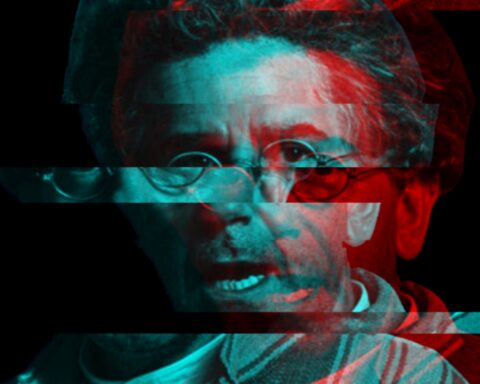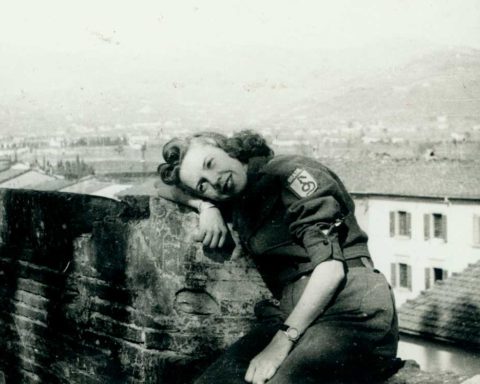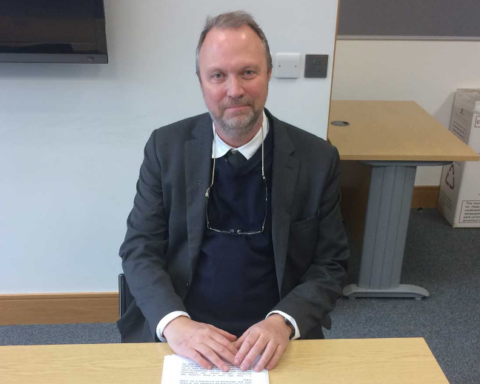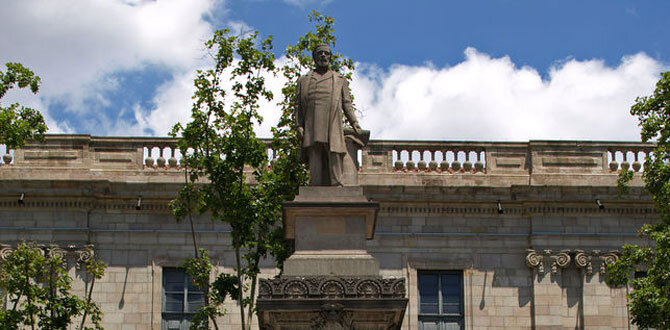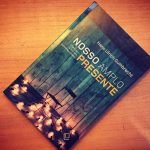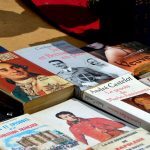Places of memory[1] archives, museums and documentation centres are stores for what is impossible for a society to remember, or what it does not want to, or should not, forget. At a time when political representation is in crisis, and the quest for historical truth challenged, beliefs, credibility and authority of all in society – corporations, authorities, the Press, justice, science and history itself – must be contingent upon a community’s archives.
In this April of 2019, when the military coup of 1964 is being remembered and “reinterpreted”, the scientific archives removed by the dictatorship from the Oswaldo Cruz Institute (IOC), have become vital sources for the historiography of the period. Known as the Massacre of Manguinhos [2], the compulsory retirement in 1970 of ten scientists, renowned yet classified as “subversive” by the regime, is recorded in books and, crucially, in documents in the care of the Department of Archives and Documentation of the Oswaldo Cruz Institute (DAD / COC / Fiocruz)
The “subversive scientists”
Considered by historiography as a political-ideological attack on the institution, the “massacre” removed the following scientists from the IOC roster: Haity Mousstché, Herman Lent, Moacyr Vaz de Andrade, Augusto Cid Mello Perissé, Hugo de Souza Lopes, Sebastião José de Oliveira, Fernando Braga Ubatuba, Tito Arcoverde Cavalcanti de Albuquerque, Massao Goto and Domingos Arthur Machado Filho.[3]
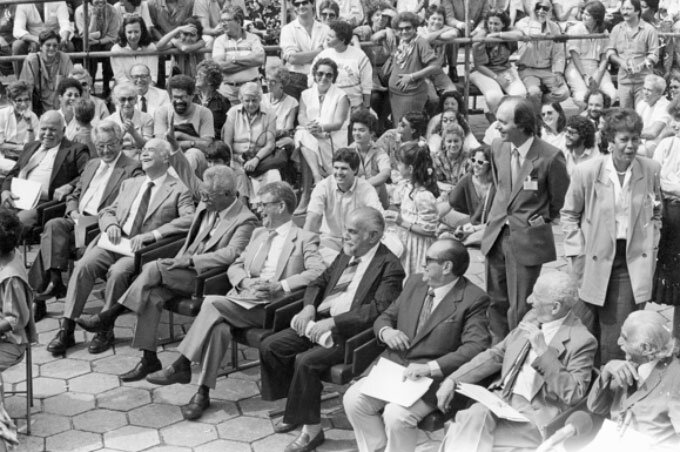
Daniel Elian dos Santos, in his master’s dissertation at COC, entitled “Massacre de Manguinhos” (1964-1970),[4] suggests that the persecution of these figures actually began in 1946, due to the support expressed to Luiz Carlos Prestes, then senator for the Brazilian Communist Party (PCB), for his speech in the National Congress.
In a telegram to Prestes and published in the PCB newspaper, the Tribuna Popular, in April 1946, the scientists showed the senator their support for the withdrawal of US bases, present in Northeast Brazil since the final years of the Second World War.
According to Elian, the veto had its beginnings in a political dispute over the conduct of national scientific research. Apparently, scientists had requested the creation of a ministry focused on science and technology (the current MCTIC or Ministry of Science, Technology and Innovation, was only created in 1985), which would expand the administrative autonomy of the IOC and other research bodies and allow the consolidation of national scientific production .
The group believed their strategy would strengthen the social function of research at the Institute, essential for the country’s development, and enlarge its role from just a producer of serums and vaccines of interest to the Ministry of Health.
It is worth mentioning that the then Doctrine of National Security and Development (DSND), since the 1950s administered by the Higher Institute for War (ESG), included the control of major epidemics as a fundamental tactic in the sanitary, productive and economic stability of the country.
For General Golbery do Couto e Silva, a professor of war studies at ESG and the principal architect of the DSND, international events would force Brazil to take sides in the Cold War and join the US-led alliance, compelling the mobilization of resources. material and production to provide the country with the economic and social conditions expected of a Western way of life. Thus, the elimination of mass diseases through collective vaccination was considered an important mechanism for Brazilian health and political stability ”.[5]
According to Elian, another prevailing perspective on the “massacre” concerns the actions of the then IOC director, Francisco de Paula Rocha Lagoa (1964 to 1969). Amid allegations of a conspiracy against public administration, and clashes over the direction the Institute should take, Rocha Lagoa called for a civil inquiry and the removal of the scientists group, accusing its members of forming a communist cell.
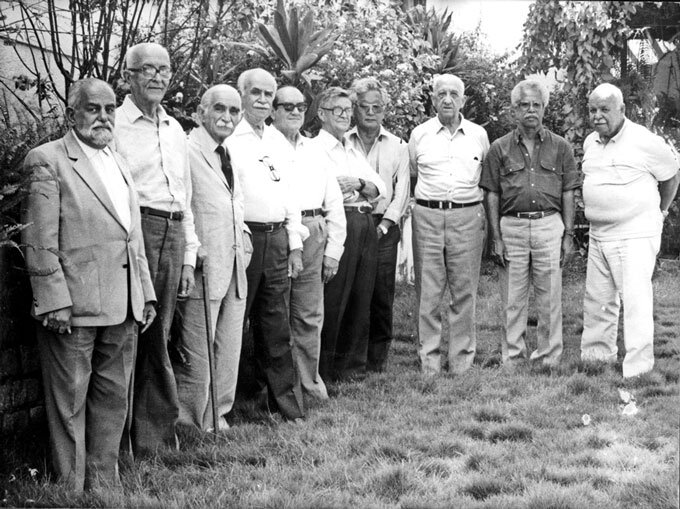
“It is an over-simplification to believe that conflict amongst scientists triggered the expulsion of IOC researchers. (…) Any discord resulted mainly from differing views on the scientific projections of the Oswaldo Cruz Institute and even for the country itself. Furthermore, as a shaper of government policy and of security strategy since the 1930s, anti-communist ideology, strengthened the case for aggressive action on the part of the State, thus controlling the activities of scientists inside and outside the institution ”.[6]
Dismissed and debarred on April 1, 1970 by Institutional Act No. 5 (which suspended constitutional guarantees and gave exceptional powers to the President of the Republic),these scientists faced unjust civil and military inquiries. Furthermore, the Complementary Act No. 75, which prohibited “teachers, employees or employees of public education establishments from exercising positions and activities in publicly funded teaching and research establishments,” would apply to them. This meant that, although disengaged from IOC, they could not teach or research anywhere else.[7]
Persecution and repression follow the expulsion
In addition to the withdrawal of political rights and the selective banning of these scientists, part of the IOC Entomological Collection, considered one of the richest, oldest and most diverse in Latin America, was scattered upon the regime’s orders. As noted by the authors of the article Entomological Collection of the Oswaldo Cruz Institute: rescue of scientific-historical collection dispersed by the Massacre of Manguinhos,
“(…) The‘ massacre ’was not limited to the expulsion of renowned scientists ; the entire structure of collections was dismantled, and the cabinets containing scientific material transported to the basement of the aged Evandro Chagas Hospital, on the Manguinhos campus. Irreparable loss and damage to countless items in the collection was caused. However, parts were sent “(…) to other institutions for safekeeping and managed to support other ongoing research”.[8]
The intrusion of the state into scientific research at the IOC had far-reaching consequences. Controlling freedom of expression and ideas, campus occupation, the restriction of grants from private national or foreign institutions, made the institutional outlook bleak. Several professors and even students, future scientists, had their academic lives interrupted by police investigations, arrests and exile.
A symbol of the times is Walter Oswaldo Cruz, son of Oswaldo Cruz. The researcher and his assistants suffered directors’ persecution, which rejected national and international funding obtained by the researcher’s personal influence, preventing the continuity of work and closing his laboratory. Walter passed away in January 1967.
“Repression inside and outside Fiocruz worsened when Rocha Lagoa rose to become Health Minister in the Médici government. In addition to AI 5, which had expelled researchers, AI 10 prevented them from carrying out research and teaching activities at any Government-financed institution. Among the issues under state suspicion was the proposal to create a Ministry of Science and Technology, a subversive cause that some of the victimised researchers at IOC had defended ”. [9]
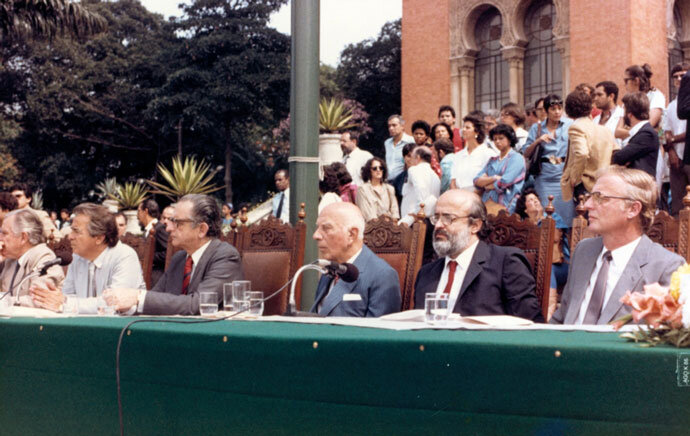
Censorship of expression, financial uncertainty, the closing of laboratories and of certain lines of research, dispersion of helminthological collections, the merger of the Oswaldo Cruz Institute with other institutions, such as the National School of Public Health, the Institute for the Production of Medicines, Instituto Fernandes Figueira, Instituto de Endemias Rurais, Instituto Evandro Chagas and Instituto de Leprologia – all ensured a decentralized and politically weakened structure.
The new body, inaugurated in 1970, would receive the name Fundação Oswaldo Cruz. The year was still to prove a struggle for health under the military government, according to Jairnilson Paim, [10] for there followed an intense process of privatization and commercialization, producing an inadequate health system, poorly distributed, unco-ordinated, inefficient, ineffective, centralized, corrupt and unjust.
Reinstatement of the proscribed scientists
The event known as the Manguinhos Massacre is very well-documented. Records left by Haity Moussatché, Herman Lent, Augusto Perissé and Sebastião de Oliveira and now in the care of the Archives Department, or DAD, contain copious documentation, such as newspaper clippings, speeches, letters, reports, letters and photographs, and more.
Another vital collection is the Oral History Project Memories of Manguinhos, made up of approximately 400 hours of interviews with scientists, administrators and technicians from Fiocruz, COC researchers. Nara Britto and Wanda Hamilton interviewed the ten who gained readmission into Fiocruz,[11] in 1986. At that time, the Foundation was creating a centre focused on the part of Fiocruz and public health, the Casa de Oswaldo Cruz. Oral history would play an essential role in recording the entire period.
In their statements, the debarred researchers said they were unaware of the motivations that led them to undergo successive civil and military inquiries, which proved nothing against them. Any friction, they said, had been due to differing views on the part the institution should play, and the progression of scientific research throughout the country. Only after 16 years, as the regime ended, under the leadership of the expert physician Sergio Arouca, were they re-instated to Fiocruz.
Notas
[1] NORA, Pierre. “Between memory and history: the problem of places”. Project History Journal of the Postgraduate Studies in History Program and the Dept. of History PUC-SP. São Paulo, SP – Brazil, 1981.
[2] Expression coined by the physician and entomologist Herman Lent (1911-2004).
[3] The profile of each one is available at Massacre de Manguinhos: Pamphlet on the re-instatement of the debarred, released in honour of the scientists held at the Fiocruz campus, in Manguinhos, on August 15, 1986. Available at https: // portal. fiocruz / sites / portal.fiocurz.br / files / documents / cartilha.pdf
[4] SANTOS, Daniel Guimarães Elian dos. Science, politics and national security: the Massacre of Manguinhos (1964-1970). Dissertation (Master of Science and Health History) – Casa de Oswaldo Cruz / Fiocruz, Rio de Janeiro, 2016. 111 f.
[5] SANTANA. Matheus Santos. “The Massacre of Manguinhos: security, development and the scientific field of health in the civil-military dictatorship (1964-1973)”. XXIX National Symposium on History. UNB, Brasília, 2017, p.9.
6] SANTOS, Daniel Guimarães Elian dos. Science, politics and national security: the Massacre of Manguinhos (1964-1970). Dissertation (Master of Science and Health History) – Casa de Oswaldo Cruz / Fiocruz, Rio de Janeiro, 2016, p. 10.
[ 7] Complementary Act No. 75 of October 20, 1969. Available at http://www.planalto.gov.br/ccivil_03/ACP/acp-75-69.htm. Apud: SANTOS, Daniel Guimarães Elian dos. Science, politics and national security: the Massacre of Manguinhos (1964-1970). Dissertation (Master of Science and Health History) – Casa de Oswaldo Cruz / Fiocruz, Rio de Janeiro, 2016. 111 f. (2016).
[8] COSTA, Jane et al. Entomological collection of the Oswaldo Cruz Institute: rescue of scientific-historical collection dispersed by the Massacre of Manguinhos. Hist. Cienc. Health – Manguinhos, Rio de Janeiro, Vol. 15, n. 2, p. 401-410, Jun. 2008. Available at http://www.scielo.br/scielo.php?script=sci_arttext&pid=S0104-59702008000200010&lng=pt&nrm=iso. Accessed on 29 mar. 2019.
[9] “A rescue from the Massacre of Manguinhos”. HCSM Blog, Apr. 2013. Available at http://www.revistahcsm.coc.fiocruz.br/um-resgate-do-massacre-de-manguinhos/. Accessed on April 1st. 2019.
[10] Interview with Raíza Tourinho Lima, published in “O regime de chumbo e o Massacre de Manguinhos”, available at https://noticias.cvrs.fiocruz.br/?p=1111. Acessed 3rd April 2019.
[11] Herman Lent was alone in not accepting re-instatement but continued to collaborate with the Foundation.
References
AZEVEDO, Nara; HAMILTON, Wanda. Yellow fever in Brazil: memories of a doctor from the Rockefeller Foundation. History, Sciences, Health-Manguinhos, Rio de Janeiro, Vol. 5, n.3, nov. 98, pp. 733-754.
COSTA, Jane et al. Entomological collection of the Oswaldo Cruz Institute: rescue of scientific-historical collection dispersed by the Massacre of Manguinhos. Hist. Cienc. Health – Manguinhos, Rio de Janeiro, Vol. 15, n. 2, p. 401-410, Jun. 2008. Available at http://www.scielo.br/scielo.php?script=sci_arttext&pid=S0104-59702008000200010&lng=pt&nrm=iso. Accessed on 29 mar. 2019.
OSWALDO CRUZ FOUNDATION. OSWALDO CRUZ. Memory of Manguinhos. Collection of testimonials. Nara Britto (coordin.) Rio de Janeiro: COC, 1991. 120p.:il.
HAMILTON, Wanda. “Manguinhos massacre: chronicle of a death foretold”. Cadernos da Casa de Oswaldo Cruz, v.1, nº1, November 1989, pp.7-17.
NORA, Pierre. “Between memory and history: the problem of place”. History Project: Journal of the Postgraduate Studies in History Program and the History Department of PUC-SP. São Paulo, SP – Brazil, 1981.
SANTANA. Matheus Santos. “The Massacre of Manguinhos: security, development and the scientific field of health in the civil-military dictatorship (1964-1973)”. XXIX National Symposium on History. UNB, Brasília, 2017.
SANTOS, Daniel Guimarães Elian dos. Science, politics and national security: the Massacre of Manguinhos (1964-1970). Dissertation (Master of Science and Health History) – Casa de Oswaldo Cruz / Fiocruz, Rio de Janeiro, 2016. 111 f.
How to cite this article
D’AVILA, Cristiane. The Massacre of Manguinhos: the repression of the dictatorship against scientists from the Oswaldo Cruz Institute (Article). In: Café História. Published on April 22, 2019. Available at: https://www.cafehistoria.com.br/massacre-at-manguinhos-scientists-feel-the-tyranny-of-dictatorship/.
Translated by TiraTEXT UK

